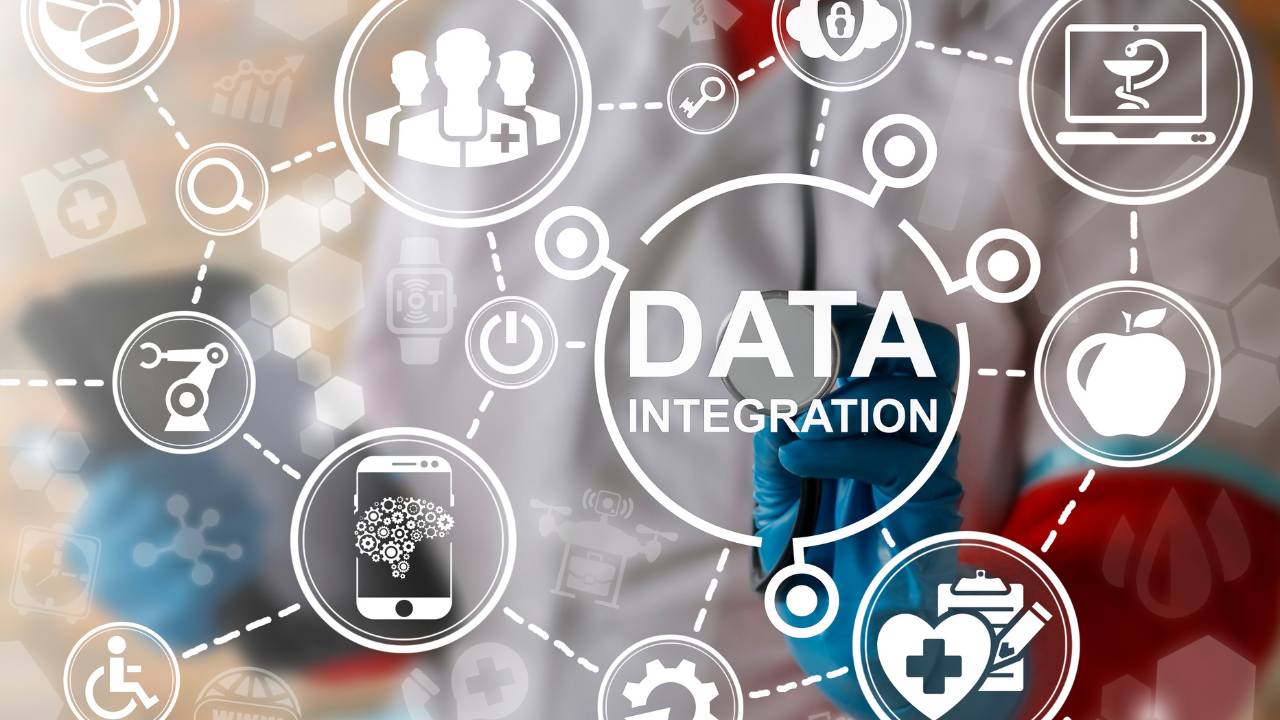
In today's data-driven world, organisations are inundated with vast amounts of data. But data means nothing if you can’t manage it effectively.
To use data to make informed decisions and gain a competitive edge, you’ll need to get a complete and accurate view of all of your data assets. That’s where data integration comes in.
But what is data integration, and how can it help you make the most out of your data? In this comprehensive guide, we’re delving deep into the world of data integration exploring its meaning while providing real-world methods and examples of it in action.
What is data integration? Definition
Data integration is the process of combining data from different sources, formats, and structures into a unified view. Its goal is to provide a unified and comprehensive dataset that you can use to quickly access the information you need, analyse trends, and identify insights that might otherwise remain hidden.
Why data integration matters
Data integration is important because it gives you a complete and accurate view of your data, allowing you to improve decision-making and create new products and services. It also plays a pivotal role in ensuring that your data is accurate, up-to-date, and readily available when needed.
Here are just some of the benefits you can expect when you implement integration into your data strategy:
- Improved decision-making - Data integration can help organisations make better decisions by providing them with a more complete and accurate view of their data. This allows them to identify trends, spot opportunities, and avoid risks.
- Optimised operations - Data integration can also help organisations optimise their operations by identifying inefficiencies and areas for improvement. For example, an organisation might use data integration to track customer interactions and identify areas where the customer experience can be improved.
- New products and services - Data integration can also help organisations create new products and services by giving them an analysis of customer needs. By understanding what they're customers are looking for, they can then develop products and services to meet those needs. For example, an organisation might use data integration to identify which products are most popular with customers and develop new products based on those insights.
Data integration Methods
Data integration is not a one-size-fits-all process. it involves several different methods, each tailored to specific use cases and requirements. Here are some common data integration techniques:
- ETL (Extract, Transform, Load)
ETL is a popular data integration technique that involves extracting data from source systems, transforming it to meet the target system's requirements, and then loading it into the target system. ETL processes are typically batch-oriented and are used when data integration doesn't require real-time updates.
- Real-time data integration
When organisations need real-time access to data, they often use real-time data integration techniques to ensure changes made in source systems are reflected in the target system in near real-time. Real-time data integration is essential for applications like financial trading platforms and online customer service, enabling them to have live, up-to-date data at their fingertips.
- Data virtualisation
Data virtualisation allows users to access data from various sources as if it were from a single source, without physically moving or duplicating the data. It's particularly useful when you want to avoid the overhead of moving large volumes of data.
- Data replication
Data replication involves creating and maintaining a copy of data from one system in another system. This technique is suitable when you need data available in real-time across multiple locations or for disaster recovery purposes.
- API integration
Many modern applications and services provide APIs (Application Programming Interfaces) that allow data to be shared and integrated. API integration facilitates the exchange of data between different applications and services, making it a crucial technique for web and mobile app development.
Examples of data integration in action

Integrated data can be used by organisations of all industries to give them a better view of their data. Here are some real-world examples of the data intgration in action:
- Retail. A retailer might integrate data from its point-of-sale system, customer relationship management (CRM) system, and e-commerce platform to create a single view of each customer's purchase history. This information can then be used to improve customer service, target marketing campaigns, and develop new products.
- Healthcare. A healthcare provider might integrate data from its electronic health records (EHR) system, billing system, and patient portal to create a single view of each patient's medical history and care plan. This information can then be used to improve patient care, reduce costs, and comply with regulations.
- Financial services. A financial services company might integrate data from its trading platform, risk management system, and customer relationship management (CRM) system to create a single view of each customer's investment portfolio and risk exposure. This information can then be used to provide better investment advice, reduce risk, and comply with regulations.
- Manufacturing. A manufacturing company might integrate data from its production planning system, quality control system, and inventory management system to create a single view of its manufacturing operations. This information can then be used to improve efficiency, reduce costs, and ensure product quality.
- Transportation. A transportation company might integrate data from its fleet management system, customer relationship management (CRM) system, and traffic data provider to create a single view of its operations. This information can then be used to improve customer service, optimise routes, and reduce fuel costs.
- Media and entertainment -A media and entertainment company might integrate data from its content distribution system, customer relationship management (CRM) system, and social media analytics platform to create a single view of its audience. This information can then be used to create more targeted content, improve customer engagement, and sell more advertising.
These are just a few examples of the many ways that data integration can be used to improve business operations. As the amount of data that organizations collect continues to grow, data integration will become even more important for getting the most out of that data.
Final thoughts
As the digital landscape continues to evolve, data integration is set to be the cornerstone of data-driven success. Whether you are an e-commerce giant, a healthcare provider, or a financial institution, understanding and embracing data integration is critical in today's data-centric world.
As the amount of data that organizations collect continues to grow, data integration will become even more important for getting the most out of that data.












